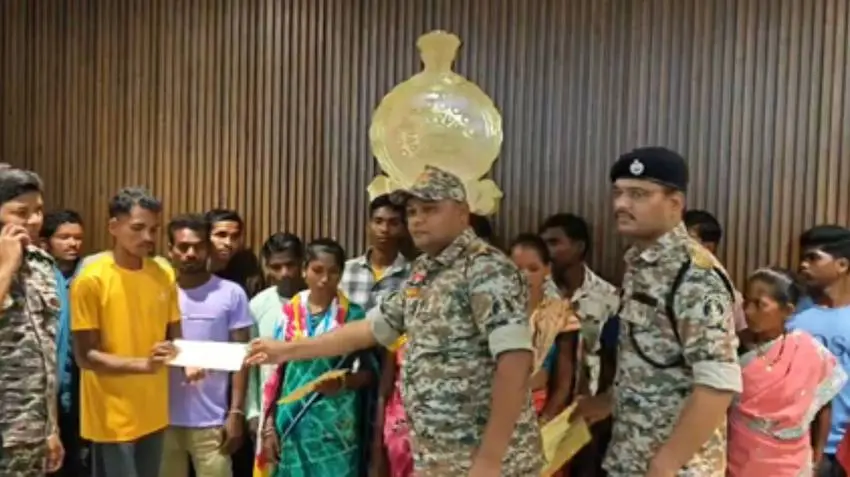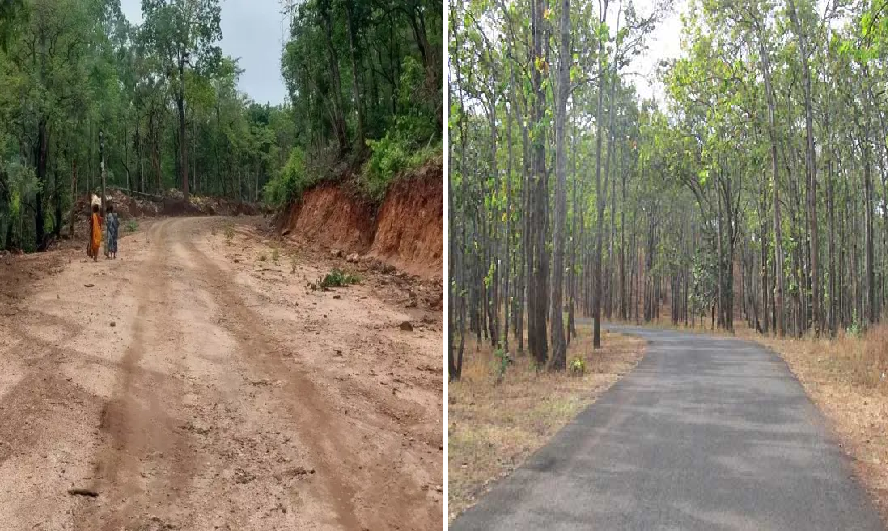
- The government forces have successfully targeted and killed major Maoist commanders, some of whom had bounties of Rs. 25 to 30 lakh on their heads, eliminating Naxals and dismantling the leadership structure among Maoists.
- What makes the Chhattisgarh government’s actions against the Naxals important and effective is its rehabilitation and surrender policy, appreciated by the Indian government.
- The Chhattisgarh government has incorporated modern technology by deploying drones, providing far-reaching surveillance capabilities and helping to reduce casualties among Indian forces.
- Apart from the military measures, the government has also focused on developmental work, expanding its reach in education and infrastructure by constructing roads and improving connectivity.
The Maoist insurgency has been one of the biggest internal security issues for the Indian government. It has acted as a major continental dilemma, as continuous violence and the war initiated by the Maoists have not only created problems for national security but also resisted the development and prosperity of the nation. The Maoist insurgency is often referred to as “Red Terrorism.” It started from the Naxalbari district of West Bengal and eventually spread across Central and Eastern India.
At present, it holds a significant presence, especially in Chhattisgarh, which has emerged as the new de facto capital of the Maoist insurgents. One of the reasons Chhattisgarh has become this capital is due to its geographical features. Being a landlocked state, Chhattisgarh shares direct proximity with Odisha, Maharashtra, Jharkhand, and Telangana. This geographical accessibility provides navigational freedom to the insurgents, making movement easier.
Another major reason for Chhattisgarh becoming the de facto capital is the lack of political will among the governance units in the state. A key region is Abujhmad in the Dandakaranya plateau. Notably, this area has not witnessed any census since India’s independence. The Government of India lacks information about the local topography, as the region is located in difficult terrain surrounded by hills and dense tropical forests, which provide insurgents cover for guerrilla warfare and easy escape routes.
However, such incidents are now becoming a thing of the past. The Indian government, in coordination with the Chhattisgarh government, has changed the tide. Chhattisgarh, once considered the heartland of the insurgency, has become an active player in eradicating it. In the year 2025 alone, 207 Naxals have been killed, and more than 50% of all encounters have occurred within Chhattisgarh. Over the past 13 months, security forces in Chhattisgarh have intensified operations against Naxal groups, resulting in more than 300 killed, over 1,100 arrested, and nearly 1,000 surrendering.
The government forces have successfully targeted and killed major Maoist commanders, some of whom had bounties of Rs. 25 to 30 lakh on their heads. These strategic eliminations are not only eliminating Naxals but also dismantling the leadership structure among Maoist insurgents.
More strategic planning is also underway, forcing the Maoists to completely retreat from Chhattisgarh, fulfilling the promise made by Home Minister Amit Shah that India will be Naxal-free by 31st March 2026.
Reasons Behind the Recent Success
What makes the Chhattisgarh government’s actions against the Naxals important and effective is its rehabilitation and surrender policy. The Indian government has appreciated this policy. According to the policy, any active Naxal who surrenders is not only granted amnesty but also offered a government job, housing, and access to various government schemes and benefits, including employment opportunities. The policy further states that any former Naxal willing to join the Indian armed forces can do so and participate in anti-Naxal operations.
This surrender policy has proven effective. More than 1000 Naxals have surrendered in Chhattisgarh in the last year alone. These individuals have been offered government jobs, housing, and exemption from legal charges.
Another important initiative by the Chhattisgarh government has been the incorporation of modern technology. The dense forests of Chhattisgarh make mobility difficult, and in response, the government has deployed drone technology. This has provided far-reaching surveillance capabilities and helped reduce casualties among Indian forces.
The Indian government and Chhattisgarh administration have also created specialised forces like the BSF Cobra Battalion. This unit is trained in guerrilla warfare and has provided expertise that the Indian forces previously lacked. This has significantly enhanced operational efficiency in difficult terrains.

A major success of the Indian government has been its penetration into the deep core of Chhattisgarh, particularly the Abujhmad area, which was once inaccessible. Naxals had used this area as a base and ran a parallel administration. Now, Indian forces have accessed the region and established permanent military camps and bases inside the deep forests, making it difficult for the Maoists to navigate or operate freely.
Along with these military strategies, the Chhattisgarh government has focused on developmental work. It has been expanding its reach in education and infrastructure by constructing roads and improving connectivity. The government is also connecting citizens affected by the insurgency with welfare schemes and government programmes. This outreach has fostered a positive attitude among the local population toward the Chhattisgarh and Indian governments and turned them against the Naxals.
References:
- https://pib.gov.in/PressReleasePage.aspx?PRID=2120771#:~:text=Success%20Stories,were%20arrested%2C%20and%20881%20surrendered.
- https://www.orfonline.org/expert-speak/chhattisgarh-s-anti-maoist-operations-key-successes-and-implications
Aayush Pal is a freelance writer on contemporary geopolitical developments. The views expressed in his work are entirely his own.
